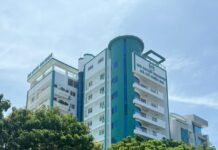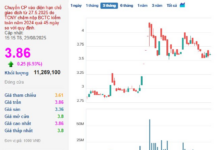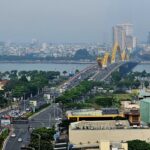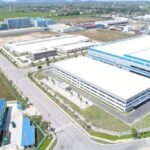As reported by VnEconomy, on September 18, the Political Bureau met to discuss and give opinions on the proposal for the high-speed North-South railway investment project. After hearing the report from the Party Committee of the Ministry of Transport on the proposal for the investment policy of the North-South high-speed rail line and the opinions of agencies, the Political Bureau discussed and concluded that this is a very important and necessary project.
The North-South high-speed rail project is 1,541 km long, with a double-track design, a standard gauge of 1,435 mm, electrification, and an infrastructure designed for a speed of 350 km/h. Starting from the Ngoc Hoi Station in Hanoi, it will pass through 20 provinces and cities and end at the Thu Thiem Station in Ho Chi Minh City. The entire line will have 23 passenger stations with an average distance of about 67 km and 5 freight stations associated with major cargo hubs.
Estimated total investment: Approximately USD 67.3 billion; Implementation period: 10 years, with the goal of completing it by 2035. The proposed schedule: The Ministry of Transport has suggested prioritizing resources to start construction on the Hanoi-Vinh and Ho Chi Minh City-Nha Trang sections (642 km) by the end of 2027. The Vinh-Nha Trang section (899 km) is expected to begin construction before 2030. The goal is to complete the entire line by 2035.
The technical dossier will be submitted to the National Assembly for consideration and decision. Along with this, the proposals for the project’s special investment mechanisms and policies will be presented for consultation at the upcoming 8th session of the National Assembly.
Regarding the project’s role, the North-South high-speed railway will transport passengers and light freight as needed. Meanwhile, the existing North-South railway will specialize in freight transport and short-haul scenic tours.
According to the Ministry of Planning and Investment, GDP is expected to increase by about 0.97 percentage points per year compared to not investing in the project. Revenue from land and commercial exploitation is estimated at about USD 22 billion, which will contribute to improving many macroeconomic indicators.
Objective: To promote socio-economic development, ensure national defense and security, optimize the transport market share, help reduce logistics costs (currently high at 17-18% compared to the world average of 10-11%). Lay the foundation for the development of the railway industry, ancillary industries, construction, materials, and create millions of jobs.
On the urgency of the project, this is a proposal that has been submitted to the National Assembly for more than 13 years but has not been implemented due to various reasons. Vietnam’s infrastructure is currently a barrier to economic development.
Vietnam now has sufficient financial capacity to ensure investment capability. By 2030, the Ministry of Finance assesses that the project will fully meet the three criteria for public debt, government debt, and national debt safety, and the two indicators for the government’s direct debt payment and budget deficit will increase slightly. By the expected implementation time of 2027, with an economic scale of about USD 564 billion, resource mobilization for investment will no longer be a major obstacle.
Based on current values, plans, and construction technology, the preliminary total investment is estimated at over USD 67 billion. On average, this amounts to about USD 43 million per km, which is lower than the investment rate in Indonesia of about USD 52 million per km. This figure is also considered average compared to other countries around the world.
For now, the Ministry of Transport plans to propose prioritizing resources to start construction on the Hanoi-Vinh and Ho Chi Minh City-Nha Trang sections, with a total length of about 642 km, by the end of 2027.

Yuanta Securities estimates the total investment for this phase to be around USD 29.1 billion (phase 1). Accordingly, just in the first phase, the volume of related work will benefit many sectors: iron and steel, other construction materials, construction contractors, electrical and power equipment, and banking…
Among these, iron and steel are the biggest beneficiaries, as the government will prioritize the use of domestic iron and steel. Iron and steel are also the most significant material in terms of the project’s requirements. Yuanta recommends prioritizing HPG due to its advantage in HRC steel and the Dung Quat 2 expansion, which will increase production capacity.
While the general contractor and consultant are likely to be foreign enterprises, domestic contractors can still compete for subcontracts. Large-scale banks with the lowest capital costs and lending rates will be able to participate in project financing, with priority given to state-owned banks. Additionally, the real estate sector will benefit from the increased value of land along the route.
A Proposal to Increase the Special Consumption Tax on Alcoholic Beverages
The proposal to levy a special consumption tax on beverages with a sugar content exceeding 5 g/100 ml is a step towards encouraging healthier choices. With a growing awareness of the health implications of excessive sugar consumption, this move could potentially incentivize consumers to opt for lower-sugar alternatives and promote a shift towards a healthier lifestyle.









































